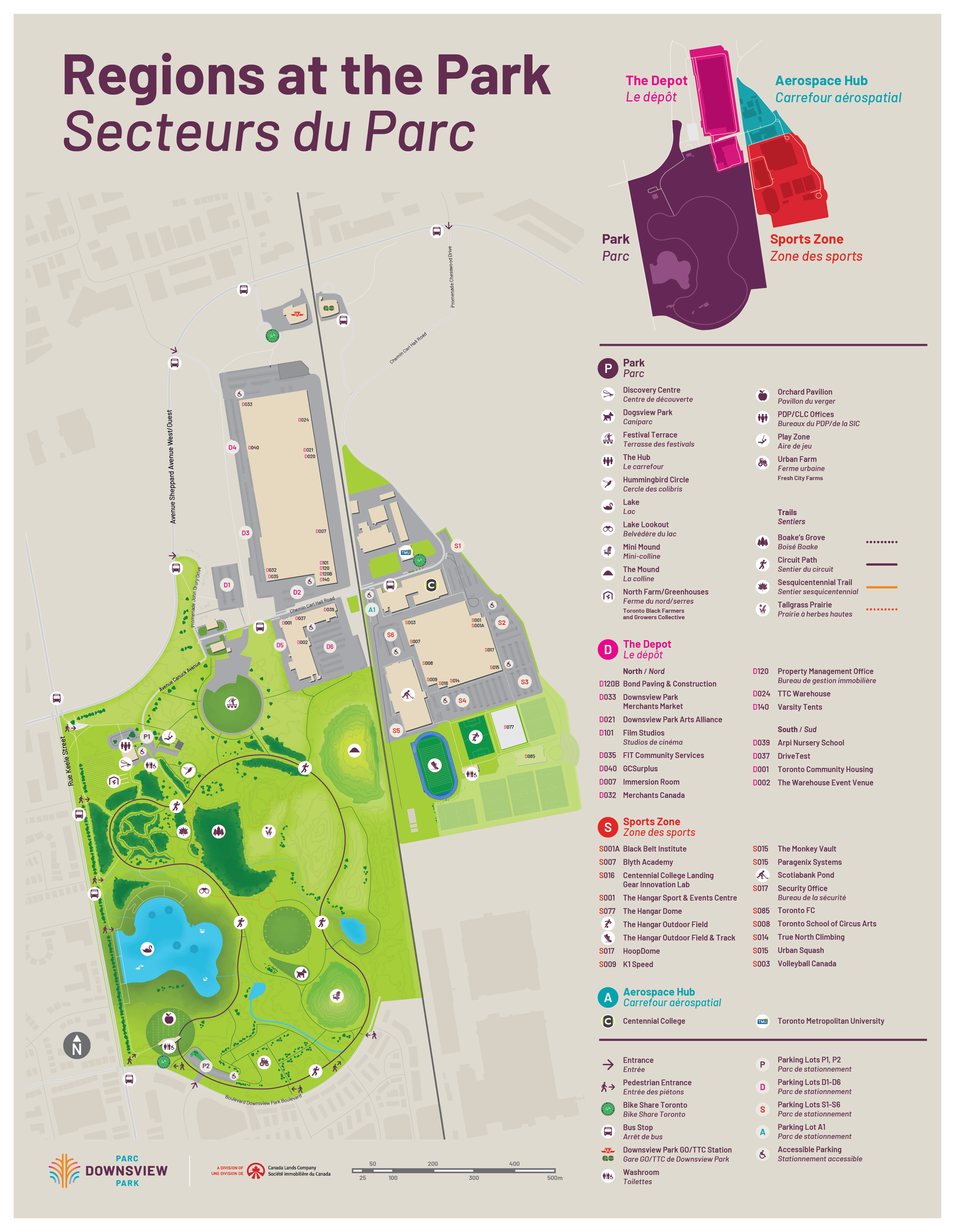There’s plenty of seating but you’re welcome to bring a picnic blanket and find a nice spot on the grass. During the warmer months, our fountains are turned on and you’ll be sure to spot some wildlife – ducks, heron, fish and turtles!
Here’s a fun fact:
The Lake plays a large part in our stormwater management system, which also consists of bioswales (vegetated, shallow depressions designed to capture and treat stormwater runoff) and filtration ponds. The system directs stormwater runoff and slows it down, giving nature time to filter the water as it makes its way back into the Black Creek water system (which is also a tributary of the Humber River!).
FAQ
Can I have picnics and barbecues by the Lake?
We have many places to sit by the Lake. You’re welcome to have a picnic or bring a covered propane barbecue. Open flames and charcoal barbecues are prohibited.
Can I skate, sled or walk on the Lake?
As the Lake was constructed as a stormwater management system, it may not freeze the same way other bodies of water might. Attempting to walk on the ice is extremely dangerous and so, we strongly discourage any activity on the Lake during the winter months. The Lake is an unsupervised area; please be safe and always keep an eye on your children and pets.
Can I swim in the Lake?
Stormwater management ponds are a collection of runoffs from the park and surrounding areas. This water is untreated and untested. Keep yourself and all living beings safe by staying out of the water.
Is fishing allowed?
We do not recommend fishing as fish are not native to the Lake and we cannot confirm their health. You may see fish or turtles that people have tossed in the water over the years, which we strongly discourage. Please help protect the Lake from invasive species.
Can I feed wildlife?
Feeding wildlife can:
- be dangerous if animals start to associate people with food. They may become more visible, bold, or likely to approach humans;
- discourage animals from foraging for their natural food sources, which can lead to health problems;
- encourage larger numbers of animals to group together than normal. If one is sick, they can easily spread disease through the group.
Keep wildlife wild by allowing them to find their own food.










